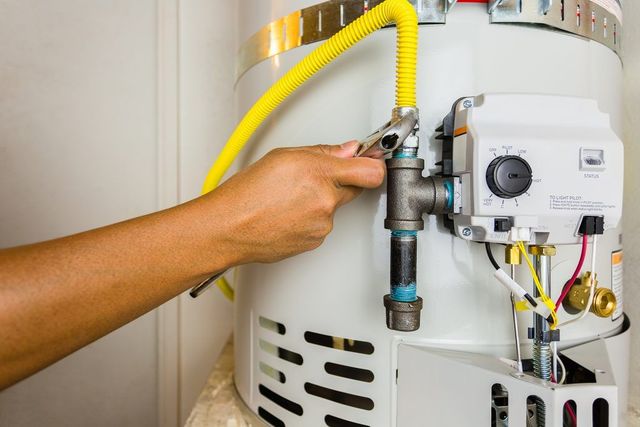Right here further down you can find a lot of awesome tips around What Kind of Maintenance Do Water Heaters Need?.

Hot water is vital for everyday convenience, whether it's for a revitalizing shower or cleaning dishes. To ensure your hot water system runs efficiently and lasts longer, regular maintenance is essential. This post supplies functional pointers and understandings on just how to keep your home's warm water system to stay clear of disruptions and costly repairs.
Introduction
Maintaining your home's hot water system might seem daunting, but with a few simple steps, you can ensure it runs efficiently for several years ahead. This overview covers every little thing from recognizing your warm water system to DIY maintenance suggestions and knowing when to hire professional help.
Relevance of Keeping Your Warm Water System
Routine maintenance not only extends the lifespan of your warm water system yet also ensures it runs successfully. Ignoring maintenance can lead to decreased performance, greater energy bills, and even early failure of the system.
Signs Your Hot Water System Demands Upkeep
Understanding when your hot water system needs attention can prevent significant problems. Watch out for signs such as irregular water temperature level, unusual noises from the heating unit, or rusty water.
Purging the Water Heater
Purging your water heater gets rid of sediment build-up, improving performance and extending its life.
Monitoring and Replacing Anode Rods
Anode poles avoid deterioration inside the tank. Evaluating and replacing them when broken is essential.
Facility Issues Needing Professional Assistance
Instances include significant leaks, electric troubles, or if your water heater is regularly underperforming.
Routine Expert Maintenance Perks
Expert upkeep can include thorough assessments, tune-ups, and making certain compliance with safety requirements.
Inspecting and Changing Temperature Setups
Adjusting the temperature level settings guarantees ideal efficiency and safety.
DIY Tips for Upkeep
You can perform several upkeep jobs on your own to maintain your hot water system in top condition.
Looking for Leakages
Routinely check pipelines and links for leaks, as these can bring about water damage and greater bills.
Comprehending Your Warm Water System
Before diving into upkeep tasks, it's valuable to comprehend the fundamental parts of your warm water system. Generally, this includes the water heater itself, pipelines, anode poles, and temperature level controls.
Month-to-month Maintenance Tasks
Regular monthly checks can assist capture small concerns prior to they rise.
Testing Pressure Relief Valves
Evaluating the pressure relief valve ensures it functions correctly and avoids extreme stress accumulation.
Protecting Pipelines
Shielding warm water pipelines lowers warmth loss and can conserve power.
When to Call a Specialist
While do it yourself upkeep is valuable, some concerns call for specialist experience.
Verdict
Normal upkeep of your home's warm water system is crucial for performance, long life, and price financial savings. By complying with these tips and knowing when to look for specialist help, you can guarantee a dependable supply of hot water without unanticipated disruptions.
How to Maintain an Instant Hot Water Heater
Before tinkering with your hot water heater, make sure that it’s not powered on. You also have to turn off the main circuit breaker and shut off the main gas line to prevent accidents. Also turn off the water valves connected to your unit to prevent water from flowing into and out of the appliance. 2. When you’re done, you have to detach the purge valves’ caps. These look like the letter “T” and are situated on either side of the water valves. Doing so will release any pressure that has accumulated inside the valves while at the same time avoid hot water from shooting out and burning your skin. 3. When the purge valves’ caps are removed, you have to connect your hosing lines to the valves. Your unit should have come with three hoses but if it didn’t, you can purchase these things from any hardware or home repair shops. You can also get them from retail stores that sell water heating systems. Read the user’s manual and follow it to complete this task properly. When the hosing lines are connected, open the purge port’s valves. 4. You should never use harsh chemical cleaners or solutions when cleaning your unit. Make use of white vinegar instead. It should be undiluted and you’ll probably use about 2 gallons. 5. Now flush your water heater. This task should probably take about 40 minutes. We can’t give you specific directions for this because the procedure is carried out depending on the type, model and brand of your heater. With that being said, refer to the user’s manual. 6. When you’re done draining the unit, you have to turn off the purge port valves again. Remove the hosing lines that you earlier installed on each of the water valves. Put the valve caps (purge port) back in their respective places and be very careful so as not to damage the rubber discs that are found inside these caps. 7. Now that everything’s back in place, check your user’s manual again to find out how to reactivate your water heating system. 8. Once it is working, turn one of your hot water faucets on just to let air pass through the heater’s water supply pipes. Leave the tap on until water flows smoothly out of it. https://www.orrplumbing.com/blog/2014/september/how-to-maintain-an-instant-hot-water-heater/

I was shown that report on Tips on Maintaining a Water Heater from a friend on another website. Kindly take the opportunity to promote this blog posting if you appreciated it. Thanks a lot for your time. Come back soon.
Call Today